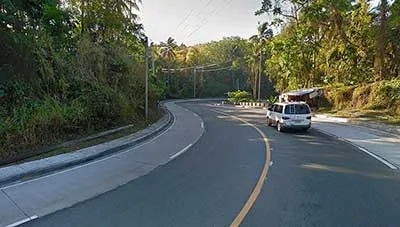[FOLKLORE] Old Tales about the “Suno” at the Zigzag Road in Cuenca, Batangas
Just past the barrio of Ibabao in the town of Cuenca, Province of Batangas, heading southwest to the town’s poblacion, is a short stretch of road winding around hillsides that is unofficially called “Zigzag1.” The Department of Public Works and Highways’ recent road-widening project has transformed this stretch into a modern thoroughfare with service shoulders, sidewalks and gentler curves, but in the old days this was a dark and perilous drive for motorists.
For some drivers, the dangerous curves were the least of their worries. Drivers of buses plying the Manila to Lemery route had learned never to look at their rearview mirrors at night while traversing the Zigzag. It was not uncommon, meanwhile, for their conductors, after majority of the passengers had gotten off the bus at the Lipa station, to warn the remaining few not to look at the empty seats behind them.
But it was not only bus drivers and their conductors who were wary of the short stretch of winding road. Even other motorists, whether going to or from the town of Cuenca became on edge for the possibility of something out of the ordinary occuring while driving along the Zigzag.
According to Batangas folklore, every now and again, an unseen entity would get on board a passing vehicle, usually at one end of the Zigzag, and then just get off at the opposite end. Hence, the phenomenon is locally referred to as “suno,” root for the Tagalog word for “to hitchike,” or its noun form, “kasuno2” or hitchhiker.
In some instances, the “suno” was unseen; and those who swore to have experienced the phenomenon would describe it as the vehicle having somehow felt heavier when the unseen entity supposedly got on board; and lighter at the opposite end of the Zigzag when it supposedly got off.
In other instances, the entity manifested itself optically; i.e. it could be seen by the human eyes. This is why it was never a good idea to look at the rearview mirror while passing through the Zigzag. This is also why bus conductors of yore would half-jokingly warn passengers not to look at the seats behind them.
Just who or what the entity was varied from one storyteller to the other. Some swore it was a white lady, and not that anybody could definitively explain what a white lady was in the first place. Others would say in was an encanto, one of the mythical guardians of the forests on either side of the road.
2 Another word for “kasuno” is “kasama,” i.e. “sa sasakyan” or a ride companion.



